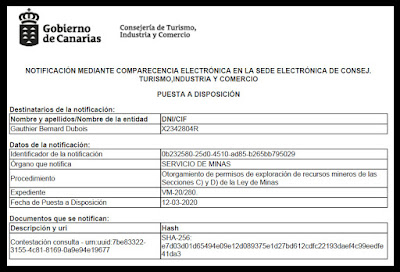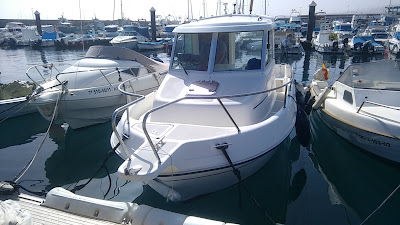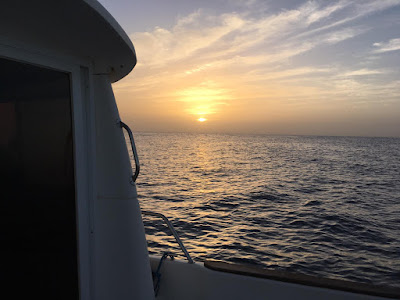The day before yesterday I proceed with my first sediment recovery in the deep sea in order to find some micrometeorites. This happened in the Canary archipelago, between the islands of Gran Canaria and Fuerteventura, about 12 nautical miles away from Gran Canaria North East coast.
 |
| Situation of the Canary Islands archipelago |
I then studied the sea bottoms using some tools like EMODnet - BATHYMETRY (Topography of the European Seas). The place I have chosen is:
N 28º06.780' / W 15º13.822' In decimal degrees: N 28.11º / W15.23º
 |
| Profile North - South |
 |
| Profile West - East |
A friend helped me with his boat. The area is quite windy and wavy. We had to wait several weeks to get a quiet sea with no wind nor waves.
The winch mounted on the boat. Ready to go.
The day after, early in the morning we started the trip. The sea was OK.
It took us about an hour to go to the selected point. On the way the sea got even more quiet, that was good because I am prone to motion sickness. I took several pills.
The winch is now releasing the 0.5mm wire with the dredge. I was not very optimistic. I had the feeling this first attempt was too deep and the dredge would never be back to this world. And I got sea sick... oh damn... I wanted to step on the ground and see my mom.
Now the winch is recovering the wireline. That was stressful. The re-used washing machine motor was working hard, the high strength stainless steel cable was working at more than 50% of its capacity in the whole 2200m submerged length. The probability of a failure was high.
Moving the boat accurately was important.
It took one hour for the winch to take the dredge up to the surface. We were so happy to check the dredge actually contained approximately 3 litres of deep sea sediments. All worked good!














Amazing work Gauthier ��
ReplyDeleteI know you also built a telescope as I went Stargazing twice with you and your team. Very inventive and I hope you get the results you wish ��
Thank you Kim, all the best for you.
Deletevaya crack
ReplyDelete